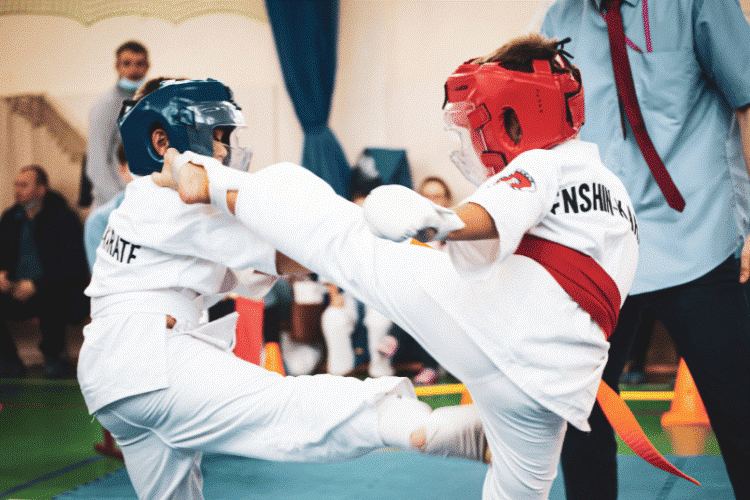Cross-training has long been a cornerstone of effective athletic development. Whether you’re a professional competitor or a dedicated amateur, incorporating different disciplines into your routine can enhance your performance, reduce injury risk, and offer new mental challenges. One cross-training option that deserves more attention across the athletic spectrum is martial arts. Often viewed narrowly as a combat sport or self-defense technique, martial arts actually offer a wide array of physical and mental benefits that can complement nearly any sport.
The Physical Benefits of Martial Arts
Martial arts are intensely physical, engaging almost every muscle group in dynamic and functional ways. Unlike static weightlifting or repetitive cardio, martial arts demand coordination, flexibility, and cardiovascular endurance. For athletes in sports ranging from soccer to swimming, these benefits translate into improved agility, quicker reflexes, and better overall body awareness.
Disciplines like Brazilian Jiu-Jitsu, Muay Thai, and Taekwondo promote full-body strength through natural movements. Striking and grappling techniques develop core strength and joint stability, while the footwork in styles like Karate or Capoeira enhances balance and coordination. For runners and cyclists, this means better posture and a more efficient stride. For football players and wrestlers, it means increased functional power and injury resistance.
Injury Prevention and Recovery
Martial arts place a strong emphasis on flexibility, balance, and controlled movement. These elements are essential for preventing injuries and are often neglected in traditional strength or endurance training. Regular martial arts practice stretches the muscles and strengthens the tendons, reducing the risk of strains, sprains, and joint injuries.
Incorporating martial arts into a recovery regimen can also be therapeutic. Disciplines like Aikido or Tai Chi emphasize slow, deliberate movement and controlled breathing. These aspects can help athletes recover from intense training sessions, enhance joint mobility, and foster a better mind-body connection.
Mental Toughness and Discipline
Beyond physical benefits, martial arts are steeped in philosophies of discipline, perseverance, and mental fortitude. The psychological resilience developed through martial arts training is invaluable for athletes in all fields. Learning to remain calm under pressure, think strategically, and push through discomfort directly translates to competitive scenarios.
Unlike many sports that rely heavily on external motivation (like a coach or team), martial arts require internal discipline. Practitioners are constantly challenged to master techniques, correct their form, and maintain focus. This builds self-motivation and a growth mindset, qualities that are crucial for athletic success.
Cardiovascular and Endurance Gains
High-intensity martial arts classes deliver robust cardiovascular workouts. Whether it’s a round of sparring or a sequence of kata, athletes are engaging in aerobic and anaerobic training simultaneously. This dual stimulus is especially beneficial for sports that require bursts of speed, followed by periods of active recovery, such as basketball, hockey, or rugby.
By conditioning both energy systems, martial arts help build endurance and stamina. This can improve performance during long competitions or high-intensity games, giving athletes a competitive edge.
Learning New Motor Skills and Enhancing Neuroplasticity
Athletes often hit performance plateaus when training within the same movement patterns for extended periods. Martial arts introduce novel motor skills that challenge the brain and body in new ways. This mental engagement fosters neuroplasticity, the brain’s ability to reorganize itself by forming new neural connections.
Practicing unfamiliar sequences, reacting to an opponent’s movement, and learning intricate forms stimulate cognitive processes and improve reaction time. For athletes in sports that demand split-second decisions, this mental sharpening can make a significant difference.
A Gateway to Cultural and Personal Enrichment
Martial arts are more than physical practices; they are rich in tradition, history, and philosophy. Training in a martial art exposes athletes to new cultures, values, and perspectives. This cultural enrichment can expand an athlete’s worldview and encourage a more holistic approach to training and competition.
Moreover, the ritualistic aspects of martial arts, such as bowing, reciting creeds, or participating in belt ceremonies, foster respect, humility, and camaraderie. These values can enhance team dynamics and sportsmanship in other athletic environments.
Versatility and Accessibility
One of the most attractive aspects of martial arts is their versatility. Whether you’re looking for high-intensity combat training or meditative movement, there’s a style to suit your needs. Even during off-seasons or injury recovery periods, martial arts offer adaptable training methods that keep athletes engaged without overloading the body.
From shadowboxing drills to partner sparring, or from flowing Tai Chi sequences to vigorous Judo throws, the range of training modalities means that martial arts can complement virtually any athletic goal.
Where Tradition Meets Modern Athleticism
While martial arts may have ancient roots, they remain incredibly relevant for the modern athlete. The fusion of traditional discipline with contemporary athletic goals makes martial arts a valuable, multifaceted addition to any training regimen.
For those inspired by the heritage and elegance of historical martial practices, even exploring the tools of the trade can deepen appreciation and motivation. Authentic gear, like traditional Japanese blades, reflects the craftsmanship and dedication of martial cultures. Enthusiasts and collectors can find high-quality pieces at samuraiswordstore.com, a resource for those who respect the legacy of martial arts.
Conclusion
Martial arts aren’t just about fighting or self-defense; they’re a holistic training method that develops strength, agility, endurance, mental resilience, and cultural appreciation. For athletes looking to break through physical plateaus, prevent injuries, or gain a psychological edge, martial arts offer a versatile and enriching path forward.
By incorporating martial arts into cross-training routines, athletes at every level can tap into a time-tested practice that sharpens the body and mind alike.


